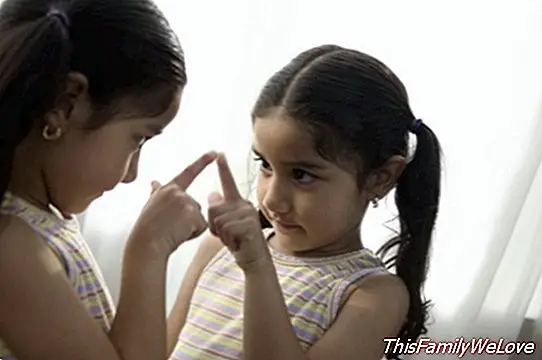The child's identity: who he is and who he thinks he is

Identity is the set of characteristics that differentiate an individual from another, and evolves throughout life, from childhood to old age. The identity of the newborn child is outlined in the internal reality of the mother and the family, even during pregnancy. But as the child grows and moves into early education, his world begins to open up.
Evolution of children's identity
1. When a baby has a few days to live, his parents begin to verbalize what his son is like. They can say that it is calm, that it is very good, a bit weepy, these labels make others identify the child with some features more than others.
2. Until six months, the baby still feels physically attached to his mother, still does not know that he and his mother are different people.
3. After six months, the baby will know that he has his mind and the others have a different one, and he can share his focus of attention with others. Like when they point to something and he knows he has to look where they tell him. From here, the intention to explore will be born in him, and he will begin to form his own identity and to know it. But we must distinguish two aspects: on the one hand his identity (who he is) and on the other his self-image (who he thinks he is).
How to work with children's identity
Initial education is responsible for training children through a process of interactions and social relationships, to enhance their abilities and develop skills for life. Therefore, the cognitive, communicative, aesthetic, socio-affective and physical parts must be worked on:
- Cognitive: son the language skills of each human being. This includes vocabulary, reasoning and expressing skills, which allow you to mentally represent, express and give name to what you perceive, feel and capture of others.
- Communicative:helps children to express themselves, whether to satisfy needs, form emotional bonds or express emotions and feelings. It also allows them to identify different emotional states in others.
- Esthetic:They must develop creativity in drawing, singing, handicrafts, dramatizations and many other activities.
- Socio-affective:it refers to the abilities of each individual to interact with others and show their feelings towards others, which provides an atmosphere of cordiality and respect for the other.
- Physical:helps to know the children's anatomy, is taught to differentiate the physical dimension between men and women.
The image of oneself and the image that others give you back
There are children who even having certain qualities, if their parents have not seen him develop it, the child is not aware that he has that virtue. And on the contrary, a child who has been told that he can perform a certain skill and but does not really have the capacity to do so. Therefore, neither by excess, nor by default, everything in its proper measure.
1. The image of oneself is very important. Both children and adults need to maintain a state of well-being and stability with respect to their self-image. Just as a child may feel comfortable, or not, with another person, he may feel comfortable, or not, with himself. This is self-esteem: how much and how the child is valued and loved himself.
2. The image returned by the others. It is important to know that much of the identity of children is based on the image that their loved ones have returned, so that the child can have a good self-esteem, you need to have estimated before. That is to say, the child will be able to love himself if he has been loved.
What the child thinks about himself also depends on his assessment process. Therefore, when our child observes his own image, he can feel proud of himself or become deeply disappointed.
In short, the adult plays a very important role. It must be he who previously recognizes and admires the child, trying not to make the mistake of endowing a child with a virtue he does not have, as we mentioned before. If we give back a positive image of him, we will help our son and avoid complexes and insecurities.
Sara Pérez
You are also interested in:
- The personality of the little son
- Personality, how are you according to your month of birth
- Personality test: are you an ambitious person?




